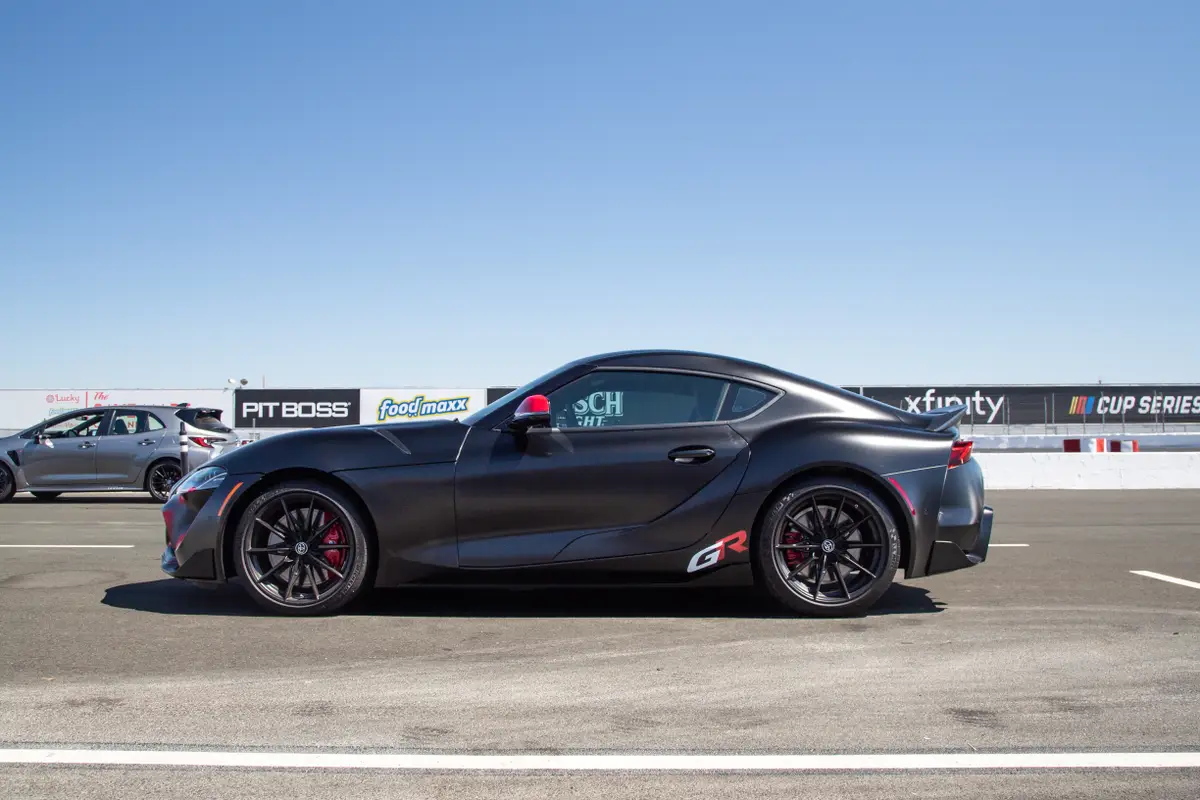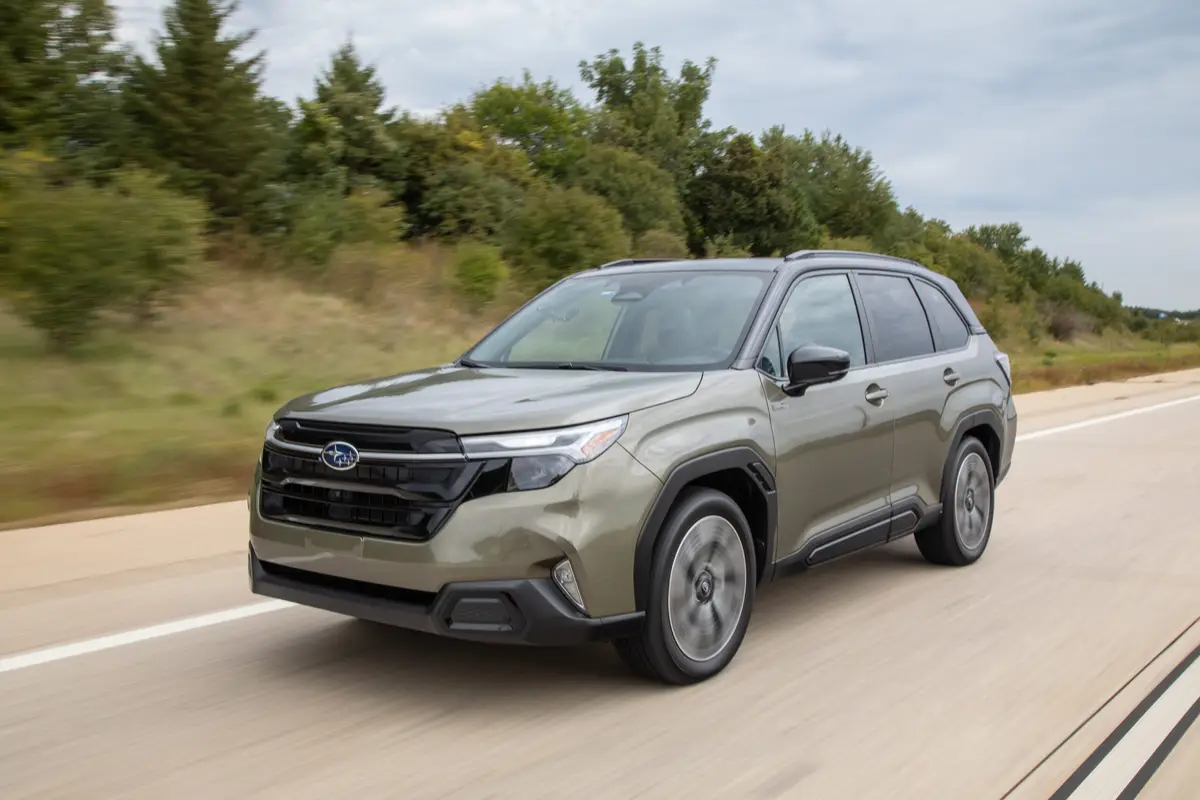The 5 O'clock Shadow: Blind Spots, Spotted

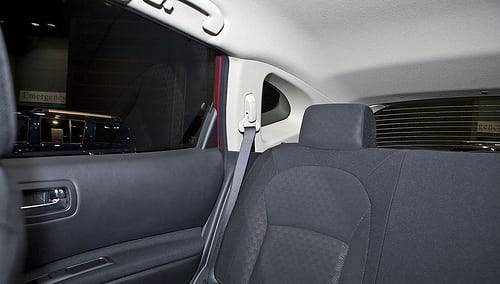
Visibility is underrated. A nasty blind spot is the sort of thing that becomes problematic by the fourth or fifth lane-change on the drive home … from the dealership where you just bought your car. Properly positioned side mirrors help, of course, but for the best chance of detecting that Jetta camping out at your 5 o’clock, nothing beats narrow roof pillars, large mirrors and tall windows. Blind spot warning systems are great, but they cost thousands of dollars and are still a rare option.
What about common cars — specifically compact crossovers, whose trendy rooflines and undersized windows can do a pretty good job obscuring the next lane’s traffic? At the Chicago auto show, we checked out 10 popular models to rate what works and what doesn’t. Our report card, with photographic evidence, follows.
2009 Nissan Rogue: D
The Rogue (above) doesn’t have so much a blind spot as it does a blind district. The D-pillars could hide city skylines — perhaps even entire landforms. They’re locked in some kind of close combat with the C-pillars, and the rear-quarter windows have become casualties of war. The blocky second-row head restraints don’t help, and neither do the tapered second-row windows, smallish mirrors and short rear window. There’s also a ceiling-anchored center seat belt for the second row; when installed, it dangles in your rearview mirror. At least it’s slung to the driver’s side and away from the 5 o’clock view.
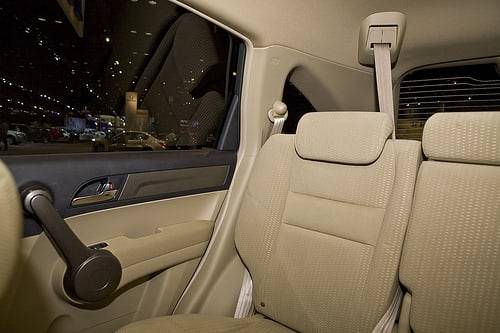
2009 Honda CR-V: D+
Honda’s D-pillars are nearly as gargantuan as Nissan’s. The rear-quarter windows are significantly better, but the squatty side mirrors are worse. The curl-over second-row head restraints stow mostly out of the way, but the center seat belt is anchored in the ceiling on the passenger side. It dangles in your rearview mirror, but at least it lines up with the D-pillar. The CR-V’s visibility beats the Rogue’s, but that’s like saying boarding group six on your plane ticket beats group seven.

2009 Kia Sportage: C-
One of the smallest crossovers in the bunch, the Sportage’s snug cabin makes the side and rear windows seem closer and, in effect, larger. That’s not to say it’s a greenhouse: Bulky C- and D-pillars obscure the view out back, and the third-quarter windows are pretty useless. The side mirrors are economy-car sized, and unlike the CR-V’s ceiling-anchored seat belt, the Sportage’s doesn’t quite line up with the D-pillars. The second-row head restraints, though small, still block your view.
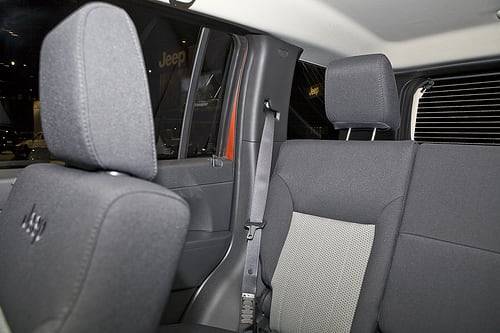
2009 Jeep Liberty: C
Jeep gets an award for tallest head restraints. Even when lowered all the way, they obstruct what’s otherwise a pretty decent view: The side and rear windows are amply tall, and window pillars are narrow all around. The center rear seat belt is anchored in the seatback — where all of ‘em should be — leaving the view straight back unobstructed. The side mirrors are adequately large, too. Were it not for those head-sized head restraints, Jeep might have beat a few more contenders.
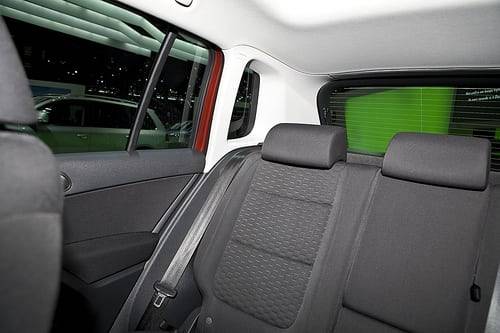
2009 Volkswagen Tiguan: C
Like the Sportage, the Tiguan’s compact dimensions make the windows seem closer and larger. Unfortunately, the D-pillars are fairly outsized, and the rear head restraints encroach on straight-back views. The center belt mounts in the seat, but the side mirrors put style over usability: They’re curvy but small. The Tiguan’s outward styling may be affable, but you’ll pay a price from within.
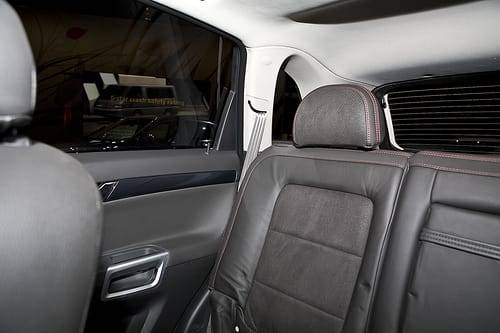
2009 Saturn Vue: C+
Add a third car to the snug-is-better approach: The Vue’s, er, view benefits from a smallish cabin, bringing the windows a bit closer all around. Unfortunately, that means everything else is closer, too, so the pillow-sized rear head restraints nearly eclipse the D-pillars, which are themselves of significant girth. The rear-quarter windows are tall but narrow, but the side mirrors and second-row windows are large enough to facilitate easy traffic checks. The center belt mounts in the seat, helping inch the Vue to midpack status.

2009 Mitsubishi Outlander: B-
The three-row Outlander has faraway-seeming windows toward the rear, but they’re large enough to make up for the distance. The curl-over head restraints don’t nest all the way into the seats, but they should line up with the chunky D-pillars for most drivers. Narrow C-pillars, a seatback-anchored center belt and amply sized rear-quarter windows help Mitsubishi’s case. The side mirrors are tall, and even though they could be wider the Outlander’s overall sightlines put it in the group’s better half.
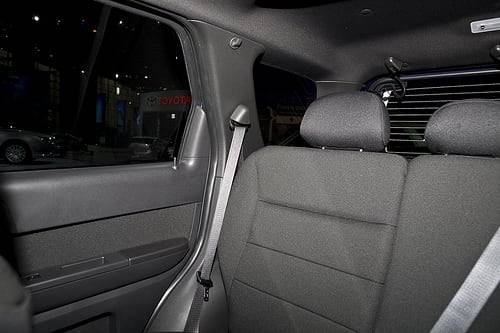
2009 Ford Escape: B
The Escape’s mirrors are large, graceless contraptions, but they do the best job of showing what’s nearby — which, last time we checked, was what mirrors are supposed to do. Large rear windows and narrow D-pillars help, though the C-pillars seem unnecessarily thick. The center belt mounts in the seat, but the head restraints perch like pigeons on a power line — OK, overweight geese on a power line — muddling sightlines from 5 o’clock to 7 o’clock. Had Ford used curl-over restraints, the Escape might have given our winner a run for its money.
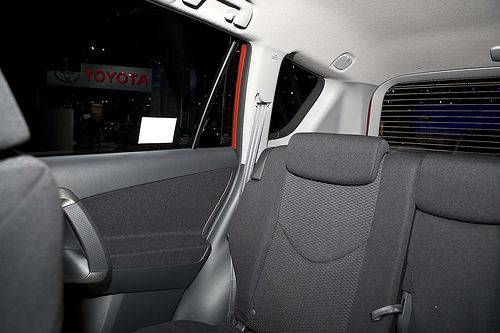
2009 Toyota RAV4: B+
If the Escape is par excellence for side mirrors, the RAV4 is for head restraints. Its curl-over ones collapse neatly into the seatbacks, leaving the view mostly uncluttered. Too bad the center seat belt hangs from the ceiling — we were on such a roll back there with seatback-mounted belts. At least this one hangs from the driver’s side, obstructing only the straight-back view. The D-pillars are too thick, but the side mirrors are nearly Escape-size, the C-pillars are narrow and the second-row windows are large. Not too shabby, Toyota.
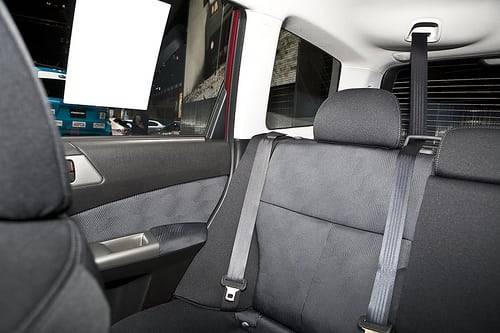
2009 Subaru Forester: A-
Tall windows, narrow pillars all around and the league’s largest rear-quarter windows make the Forester’s 5 o’clock view a sightline for sore eyes. The side mirrors are large enough, if not quite as wide as the Escape’s. Knock those head restraints down and anchor the seat belt in the seat, and Subaru would have a perfect score. As it stands, though, the Forester still takes top honors here, so if you suffer from lane-change paranoia, ask your doctor about Subaru. (Just don’t take it if you’re pregnant, nursing or may become pregnant.)
Interested in procedures? Here goes: For each test, we positioned the driver’s seat to a comfortable position, stowed any third-row seats and positioned the second-row seats as far back in their tracks as possible, if they were fore/aft adjustable. We moved second-row head restraints to their lowest positions and left any reclining backrests at their default angles — i.e., the first click when you bring them upright from a folded-down position. Two exceptions: The Tiguan and RAV4 had uncomfortably upright default positions for the reclining second rows; both expand the cargo area at the obvious expense of second-row passengers. Before judging either car’s blind spot, we reclined the seatbacks to an angle that roughly matched those in the other cars.

Former Assistant Managing Editor-News Kelsey Mays likes quality, reliability, safety and practicality. But he also likes a fair price.
Featured stories
